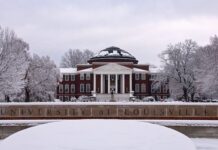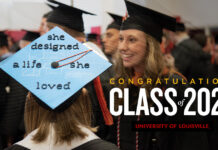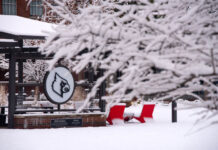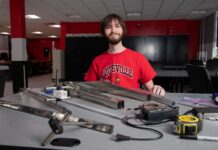UofL’s Department of Environmental Health and Safety (DEHS) manages the collection and recycling of batteries for the university. All battery types are accepted, including alkaline, lithium, nickel-cadmium and lead-acid.
Two years ago, DEHS implemented a “green bucket” approach to re-energize battery recycling efforts. So far, more than 50 green buckets have been placed at various departments throughout Belknap and Shelby campuses and the Health Sciences Center allowing all university faculty, staff, and students to have onsite recycling for their departments. DEHS requests that the battery recycling container be placed in an area that is visibly seen and can be monitored. When the container is nearly full, university personnel can submit a pick-up request online. Green buckets are still available.
Recently, DEHS and Physical Plant coordinated efforts to bring onsite battery recycling to university housing. Effective Aug. 1, students living in Miller Hall, Unitas Tower, Center Hall, Threlkeld Hall, Wellness Hall, West Hall, Louisville Hall, University Tower Apartments and Medical-Dental Apartments will be able to drop off their used batteries at their residence hall front desk. Students living at university housing managed by UofL Properties also have access to onsite recycling services.
Recycling tip: “Reduce, Recharge, Reuse, and Recycle.” Whenever possible use rechargeable batteries. The best rechargeable batteries are the “low self-discharge” nickel-metal hydride (Ni-MH) cells. These low-discharge batteries have a lot going for them: they come fully charged (like alkaline batteries), and they can hold their charge over many months. Because they can hold their charge for so long, they are suitable for low-drain devices like remote controls and flashlights.
Lighting accounts for close to 20 percent of the average home’s electric bill. ENERGY STAR qualified compact fluorescent lamps (CFLs) use up to 75 percent less energy (electricity) than incandescent light bulbs and last up to 10 times longer. Have a used CFL? Students living in Miller Hall, Unitas Tower, Center Hall, Threlkeld Hall, Wellness Hall, West Hall, Louisville Hall, University Tower Apartments and Medical-Dental Apartments now will be able to drop off their used bulbs at their front desks. It is very important to place the used bulb in a bulb box to prevent breakage. However, if the original box is not available, the front desks can provide a foam pouch.
Recycling Fact: In the past three years, UofL recycled more than 133,000 light bulbs and lamps.
DEHS also oversees the collection and recycling of all spent lighting waste. Physical Plant personnel are responsible for replacing spent light bulbs in university buildings on all campuses. Faculty and staff can contact Physical Plant Work Control (Belknap/Shelby 852-6241 or HSC 852-5695) to have a light bulb or lamp replaced and recycled.
Fluorescent light bulbs do contain a small amount of mercury (4-5 milligrams, which is about the size of a pencil point). It is important to note that if you accidentally break a fluorescent light bulb, that you properly clean it up. Here is some helpful information to clean up a broken CFL at home:
1. Immediately have people and pets leave the room.
2. Air out the room for at least 15 minutes by opening a window or door to the outdoor environment.
3. Shut off the central forced air heating/air-conditioning system, if you have one.
4. Collect materials needed to clean up broken bulb: rubber gloves, stiff paper or cardboard; sticky tape; damp paper towels or disposable wet wipes (for hard surfaces); and a glass jar with a metal lid or a sealable plastic bag.
DO NOT VACUUM. Vacuuming is not recommended unless broken glass remains after all other cleanup steps have been taken. Vacuuming could spread mercury-containing powder or mercury vapor.
5. Be thorough in collecting broken glass and visible powder.
6. Place cleanup materials in a sealable container.
7. Promptly place all bulb debris and cleanup materials, including vacuum cleaner bags, outdoors in a trash container or protected area until materials can be disposed of. Avoid leaving any bulb fragments or cleanup materials indoors.
UofL faculty and staff should follow the above evacuation information if a fluorescent lamp breaks in their work areas. Faculty and staff can contact Physical Plant for cleanup and bulb replacement. Students in university residence halls should also follow evacuation procedure and can contact their front desks for assistance.

























